Pyrenees' glaciers may disappear in less than 50 years
 Much has been said about the situation of the glaciers in Greenland and Antarctica, but little is known about those in the high mountain areas of the Iberian Peninsula. A Spanish study has now revealed, for the first time, that of all mountain areas only the Pyrenees has active glaciers left. What is more, the steady increase in temperature - a total of 0.9°C since 1890 - indicates that Pyrenean glaciers will disappear before 2050, according to the experts.
Much has been said about the situation of the glaciers in Greenland and Antarctica, but little is known about those in the high mountain areas of the Iberian Peninsula. A Spanish study has now revealed, for the first time, that of all mountain areas only the Pyrenees has active glaciers left. What is more, the steady increase in temperature - a total of 0.9°C since 1890 - indicates that Pyrenean glaciers will disappear before 2050, according to the experts.Researchers from the University of Cantabria, the Autonomous University of Madrid and Valladolid have produced a summary on the current situation in the Pyrenees, the Sierra Nevada and the Picos de Europa. The scientists based their work on how climate change has affected the glaciers since the so-called Little Ice Age (from 1300 to 1860) to conclude that only the Pyrenees have active glaciers left.
High mountains are particularly sensitive areas to climate and environmental changes, and how glaciers evolve there in response to climate change is one of the most effective indicators of current global warming, in this case evidenced in Iberian mountain ranges - Juan José González Trueba, lead researcher and professor from the University of CantabriaThe work, recently published in the journal The Holocene, represents Spain’s scientific contribution to the question of climate change effects on high mountains and glaciers. The authors compiled extensive data from current and historic glacier studies, as well as information from Spain’s ERHIN Programme to sketch the evolution of the deglaciation process to date. Their findings are a clear warning signal.
60% of Pyrenean glaciers have melted
There are currently only 21 glaciers in the Pyrenees (ten on the Spanish side and eleven on the French side) covering an area of 450 hectares. In just 15 years, since 1990, glaciological calculations have shown that rapid melting has caused the total regression of the smallest glaciers and 50%-60% of the surface area of the largest glaciers.
According to the study, between 1880 and 1980, at least 94 glaciers disappeared in the Iberian Peninsular altogether, and since the 1980s, the remaining 17 glaciers have disappeared as well. Glaciers are sensitive geoindicators of climate change. They are also features with a high heritage value. And most importantly, they provide drinking water to a large part of the planet's population.
A look back at the past
The glaciers in the Iberian Peninsula's mountains were formed in the Little Ice Age. The coldest period in which the greatest spread of glaciers in the Spanish high mountains was recorded occurred between 1645 and 1710:
 energy :: sustainability :: biomass :: bioenergy :: glaciers :: water :: global warming :: Spain :: Pyrenees ::
energy :: sustainability :: biomass :: bioenergy :: glaciers :: water :: global warming :: Spain :: Pyrenees :: Between 1750 and the beginning of the 19th century small glaciers receded in the Pyrenees but soon recovered thanks to a new period of low temperatures. However, since then, temperatures have risen between 0.7ºC y 0.9ºC in Spain’s northern mountains, showing the effects of global warming.
The first evidence of the existence of glaciers in the Picos de Europa was discovered in the notes of geographers, naturalists and travellers at the end of the 19th century. Recent studies have shown that Cantabrian glaciers existed in historic times, always located on the north faces of the highest peaks, under an oceanic climate at extremely low altitudes, from 2190m to 2600m.
In the Sierra Nevada, scientists have verified the existence of the southernmost glacier in Europe during the Little Ice Age, under Mediterranean climate conditions, and where factors promoting the accumulation of snow were altitude, orientation (north side) and topographic conditions. This glacier, also indicated by the first naturalists, disappeared at the beginning of the 20th century. The rise in temperature caused its melting until it was transformed into a small “ice lens” buried beneath a dense blanket of deposits.
Image: glacier of the Monte Perdido in the Pyrenees. Credit: SINC / Juan José González Trueba.
References:
González Trueba, J.J; Martín Moreno, R.; Martínez de Pison, E.; Serrano, E. “’Little Ice Age' glaciation and current glaciers in the Iberian Peninsula”. The Holocene 18(4): 551-568 June 2008.
SINC: Los glaciares de los Pirineos desaparecerán en menos de 50 años - September 4, 2008.
Article continues
 --------------
--------------
 Mongabay, a leading resource for news and perspectives on environmental and conservation issues related to the tropics, has launched Tropical Conservation Science - a new, open access academic e-journal. It will cover a wide variety of scientific and social studies on tropical ecosystems, their biodiversity and the threats posed to them.
Mongabay, a leading resource for news and perspectives on environmental and conservation issues related to the tropics, has launched Tropical Conservation Science - a new, open access academic e-journal. It will cover a wide variety of scientific and social studies on tropical ecosystems, their biodiversity and the threats posed to them.


 A group of scientists affiliated with the
A group of scientists affiliated with the 

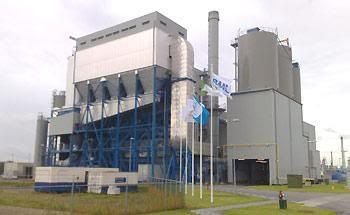
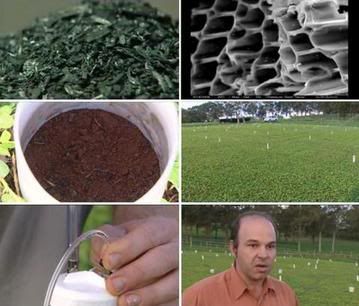
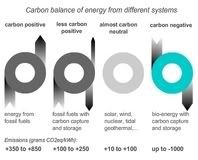
 It is very rare for a policy maker to explicitly say which of the future energy sources he thinks will be the most important. Most politicians would prefer to remain technology neutral. But in South Korea, Knowledge & Economy Minister Lee Yoon-Ho was asked the question by parliament, requiring him to make a choice. His
It is very rare for a policy maker to explicitly say which of the future energy sources he thinks will be the most important. Most politicians would prefer to remain technology neutral. But in South Korea, Knowledge & Economy Minister Lee Yoon-Ho was asked the question by parliament, requiring him to make a choice. His 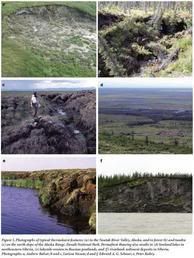
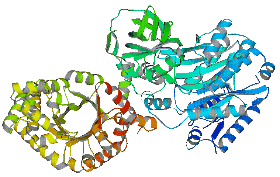







Saturday, September 06, 2008
The problem with wind power in the UK: increased dependence on fossil fuels
Experts counter this conclusion by stating that the baseload for wind in the UK does not have to be dirty or costly, but can come from biomass instead of fossil fuels (previous post on the UK's Renewables Advisory Board, which is increasingly seeing biomass power plants as key elements of an overarching strategy on reliable renewable energy).
In Denmark, Europe's most successful wind energy nation, excess power is exported to neighboring countries via an integrated infrastructure. And when the wind doesn't blow, the country buys electricity from the same neighbors to make up the balance. In the UK, however, this option is out of the question: there is a link to France and one being planned to Holland but these won't be able to shift the amount of power needed to balance the system when based on large scale wind power. Building the necessary infrastructure would make wind a very costly renewable energy source.
Another idea for Britain would be to store its wind power in giant batteries, but this is difficult, untried and again, very expensive.
This leaves backing up wind with fossil fueled baseloads. Most feasible will be a reliance on gas-fired power stations as these are the easiest to turn off and on. But this will mean a "dash for gas" - a resource that Russia, hardly Britain's most cooperative ally, has in spades.
Dieter Helm, professor of energy policy at Oxford University, says Britain could find itself badly exposed when it bets on wind power that needs to be backed up by ever more expensive and unreliable gas supplies. It would be "about the worst possible thing that one could conceive of given what's going on in Russia and given our dependence on Russian gas supplies":
It could also prove costly. The energy company E.On recently estimated back-up power could cost up to £10bn per year across all the energy suppliers. That would add £400 to the average annual household energy bill for all Britons. Wind energy would not be the low-cost energy resource many predicted it to be.
The British government accepts it is a challenge to manage energy security and price rises but it is fully committed to reaching the EU's 2020 target. And to do this, it has taken wind power into the energy mix. But the questions surrounding the ambitious plans are mounting. If wind power mean an increased reliance on ever costlier fossil fuels, the 'renewable' and 'clean' resource may not be so green as expected. And the argument that wind power would boost energy security, would no longer hold, the experts say.
The EU is expecting its renewables target to become legally binding within the next year so the UK could be hauled before the European courts of justice and face huge fines, if it doesn't comply. This pressure has opened the door for alternatives to intermittent wind power. More and more policy makers, as well as renewable energy companies are looking at biomass, which is being increasingly seen as the more attractive renewable energy source - and precisely the one that can make wind really green by providing a clean baseload.
References:
BBC: When the wind doesn't blow - September 5, 2008.
Biopact: RAB: biomass now the key renewable energy source, as backlash against wind and solar grows - July 29, 2008.
Biopact: Energy major Total will not invest in wind power - the base-load fallacy -
October 15, 2007
Article continues
posted by Biopact team at 9:11 AM 2 comments links to this post
